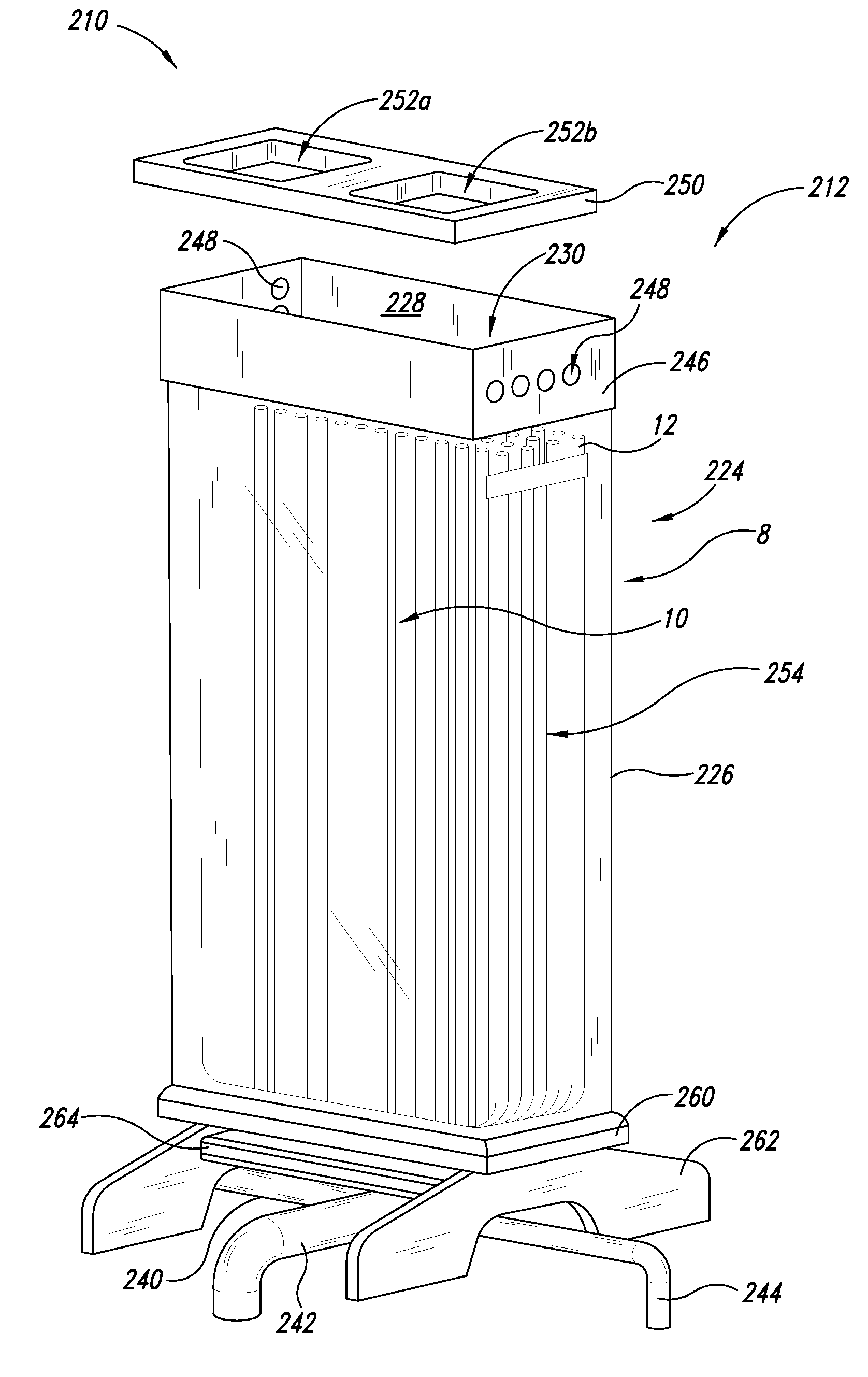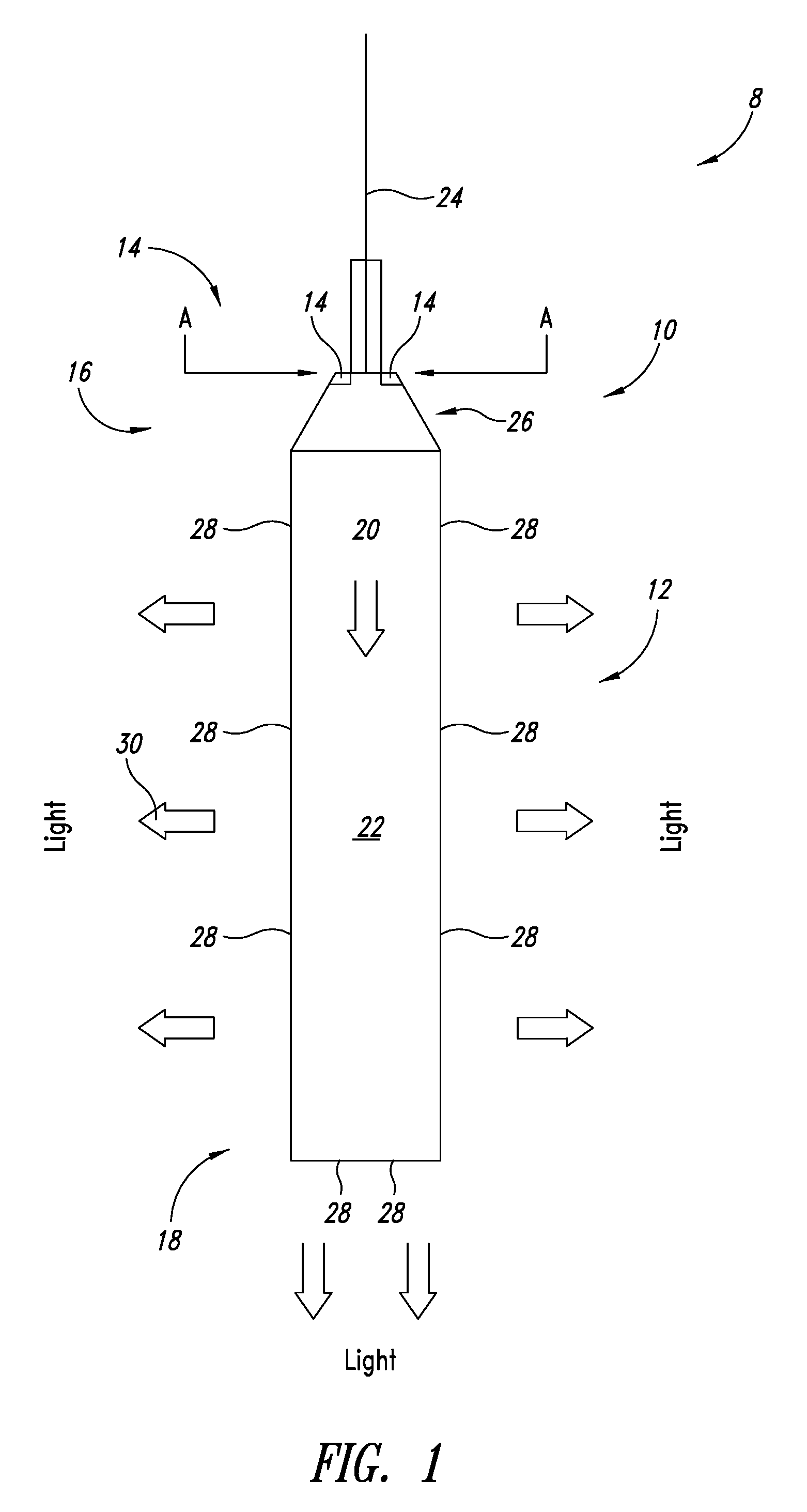Illumination systems, devices, and methods for biomass production
a biomass and illumination system technology, applied in the field of illumination systems, can solve the problems of inability to meet the needs of biomass production, etc., to achieve the effect of reducing biomass production cost, increasing biomass production, and cost-effective operation
- Summary
- Abstract
- Description
- Claims
- Application Information
AI Technical Summary
Benefits of technology
Problems solved by technology
Method used
Image
Examples
Embodiment Construction
[0061]In the following description, certain specific details are included to provide a thorough understanding of various disclosed embodiments. One skilled in the relevant art, however, will recognize that embodiments may be practiced without one or more of these specific details, or with other methods, components, materials, etc. In other instances, well-known structures associated with bioreactors, the transmission of effluent streams into and out of a bioreactor, the photosynthesis and lipid extraction processes of various types of biomass (e.g., algae and the like), fiber optic networks to include optical switching devices, light filters, solar collector systems to include solar array cells and solar collector mechanisms, methods of monitoring and harvesting a biomass (e.g., algae, and the like) to extract oil for biofuel purposes and / or convert a treated biomass (e.g., algae, and the like) to feedstock may not have been shown or described in detail to avoid unnecessarily obscur...
PUM
| Property | Measurement | Unit |
|---|---|---|
| peak emission wavelength | aaaaa | aaaaa |
| concentration | aaaaa | aaaaa |
| first peak emission wavelength | aaaaa | aaaaa |
Abstract
Description
Claims
Application Information
 Login to View More
Login to View More - R&D
- Intellectual Property
- Life Sciences
- Materials
- Tech Scout
- Unparalleled Data Quality
- Higher Quality Content
- 60% Fewer Hallucinations
Browse by: Latest US Patents, China's latest patents, Technical Efficacy Thesaurus, Application Domain, Technology Topic, Popular Technical Reports.
© 2025 PatSnap. All rights reserved.Legal|Privacy policy|Modern Slavery Act Transparency Statement|Sitemap|About US| Contact US: help@patsnap.com



